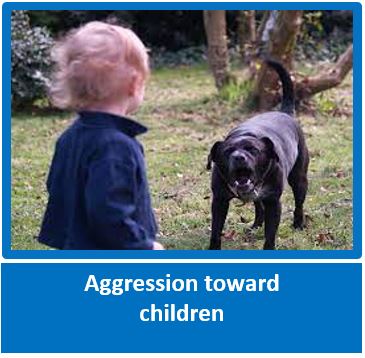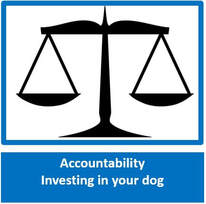
Please visit and LIKE our Facebook Page and share with family, friends and on your own Facebook page, and ask them to share further – it is only by working together and sharing knowledge and education that we can improve the lives of dogs and assist owners. We do not inundate you with posts – an average of 5 per week, and the odd Did You Know and General Post. Thank You!
Teaching your dog self-control - 4 easy ways to teach this
Scotty Valadao - Friends of the Dog - Canine Behaviourist
Scotty Valadao - Friends of the Dog - Canine Behaviourist
Self-control in dogs is called Impulse control in the dog world.
Neither puppies, babies or young children come with in-bred self-control, they live in the ‘now’ – if they want something, they want it now! This really is something that needs to be taught, and can be taught at any stage of their lives, and the sooner taught the better – you are more likely to have a well behaved, well balanced dog. Dogs that are not taught self-control, normally turn into bad mannered dogs that tend to be frustrated and often stressed, especially through the difficult adolescent period.
Let’s look first of all how lack of self-control is exhibited in dogs – some common examples below, and unfortunately, the more you give into their demands, the worse the behaviour tends to become – think about it from the dogs point of view –“ I did xxxx and it worked" – therefor the behaviour is going to be repeated and normally escalates.
Once the dog figures out which behaviours work, and which don’t, they are more likely to repeat the behaviours that do work, especially when paired with positive reinforcement such as praise, being allowed to go out the door, a treat, a ball being thrown etc – all of these are rewarding to the dog.
4 Self-Control Exercises to get you started
Jumping up when you arrive home).
First of all, never scream or shout when your dog does this, as you will be inadvertently reinforcing the behaviour you don’t want. Never smack a dog for this behaviour – if anybody is to be smacked, take a rolled-up newspaper and hit yourself over the head for not teaching self-control before!
If you do have a puppy, then prevention is better than cure. Don’t allow the pup to jump in the first place, and you can even just slip a finger under the collar to prevent jumping up. As the pup calms, praise and give a treat and really re-enforce a good Sit.
First, put some kibble in your car and pop in your pocket when you come home to get your started. Once your dog has figured out what behaviour works, you can start to fade the treats.
Demanding attention
As I write this I have a good laugh thinking how well our dogs have trained us! When it comes to demanding attention, very simple – totally ignore the dog. An example here is when you are sitting on the couch and your dog comes up and demands your attention – totally ignore, even your using your body to get your point across – cross your arms, turn your head away and do not interact with him in any way at all.
The second, he gives up and turns to walk away, call him quietly, and give him the attention he does want – make this a few seconds after he gives up – once he has figured out what works and what does’nt, you can vary the time, gradually building it up, and when he has mastered this new skill, not calling him back at all.
We are not telling our dogs we don’t love them, we are just showing them that attention is given on our terms, not theirs. Here we are not praising or offering food – the attention they wanted from us is the reward in this case. Think about how often we may have called our dogs in the past and they have ignored us – you are now turning the tables on them and speaking dog, and he will understand!
Wait at doors
It is always a good idea to teach a formal Wait, but in-between, you can teach your dog by experience. How to :-
You can do the same thing, both getting in and out of the car, get a Wait before the ball is thrown, before going up and down the stairs, waiting for food, and in so many other situations.
Settle
Prevention is a wonderful tool! Before your dog gets too excited, call him and settle him down. Gently restrain him, run your hands slowly and gently from the head, all along the back and gently clasp the tail against the body. In TTouch we say ‘calm the tail and you calm the dog’. Do this several times, constantly, and in a low, quiet voice, saying ‘settle, good boy, settle’. As he calms down, you can then release him back to the situation where the over excited behaviour occurred. He now learns that when you do call him the fun is not over. It really is our responsibility to help our dogs to calm down and learn self-control.
It is also a good idea to teach your dog to lie quietly on his bed close to you, and what makes this so much easier and rewarding for him, is to have a special toy, such as a stuffed Kong or a Busy Buddy, and as he lies down, he gets this delicious chew toy to keep him busy.
If he tries to take it off the bed, return it to the bed, even tying it to the leg of your chair if possible, Quietly praise the behaviour you do want – settle. The secret here, is that when it is time to go and do something else, this delicious chew toy is taken away – message – lie quietly and a reward is forthcoming.
It is all too often that we neglect to praise the behaviour we want, so in this instance, for example, if the dog is lying quietly by himself, praise him quietly – ‘good settle, good boy’. Do look for any situation, in general where you can really reinforce the behaviour you do want.
We have given you 3 links to articles below which will further help you to teach your dog self- control – Leave Exercise and Swap Exercise.
Neither puppies, babies or young children come with in-bred self-control, they live in the ‘now’ – if they want something, they want it now! This really is something that needs to be taught, and can be taught at any stage of their lives, and the sooner taught the better – you are more likely to have a well behaved, well balanced dog. Dogs that are not taught self-control, normally turn into bad mannered dogs that tend to be frustrated and often stressed, especially through the difficult adolescent period.
Let’s look first of all how lack of self-control is exhibited in dogs – some common examples below, and unfortunately, the more you give into their demands, the worse the behaviour tends to become – think about it from the dogs point of view –“ I did xxxx and it worked" – therefor the behaviour is going to be repeated and normally escalates.
Once the dog figures out which behaviours work, and which don’t, they are more likely to repeat the behaviours that do work, especially when paired with positive reinforcement such as praise, being allowed to go out the door, a treat, a ball being thrown etc – all of these are rewarding to the dog.
- The dog tries to push you out of the way as you are opening the door, and the second open, goes barrelling through it.
- Does not want to wait as you go up and down the stairs, will dash in front of you.
- Already pawing and over excited to get out of the car, even before you have the door open.
- Jumping all over you as your arrive home.
- Jumps all over the place when you get out the collar and lead for a walk and pulls continually on the lead.
- If he wants your attention, or wants you to play or throw the ball, will actually demand attention from you by barking, whining, jumping up on you, spin around, and many other common nuisance behaviours.
4 Self-Control Exercises to get you started
Jumping up when you arrive home).
First of all, never scream or shout when your dog does this, as you will be inadvertently reinforcing the behaviour you don’t want. Never smack a dog for this behaviour – if anybody is to be smacked, take a rolled-up newspaper and hit yourself over the head for not teaching self-control before!
If you do have a puppy, then prevention is better than cure. Don’t allow the pup to jump in the first place, and you can even just slip a finger under the collar to prevent jumping up. As the pup calms, praise and give a treat and really re-enforce a good Sit.
First, put some kibble in your car and pop in your pocket when you come home to get your started. Once your dog has figured out what behaviour works, you can start to fade the treats.
- As you come through the door, with the kibble hidden, stand absolutely still and do not look at, touch, talk, or interact with the dog in any way. Try and position yourself with your back close to the door, especially if the dog has started jumping up on your side or your back. (This bad habit normally comes from somebody having kneed the dog, or lifted their knee to stop the dog).
- The second the dog stops and all 4 feet are on the ground, very quickly, soft praise “good Fluffy” and offer a treat with an open palm. Reason for the open palm is so you don’t’ have the food grabbed out of your hand or accidently nipped due to over excitement. The reason for the quiet and soft praise is not to over excite the dog again. You can teach a Sit in-between, but for now just 4 feet on the floor is enough.
- Now take a step forward and repeat. I would suggest doing a couple of steps in a row practising this.
- You can teach the Sit separately if your dog is not brilliant at it.
- Two other tips which really helps to change jumping up behaviour, and teach self-control are:
* Work to Earn – no matter what your dog wants, he has to first Sit before he gets it. This would be your attention, the ball to be thrown, food, in fact anything he wants.
* Take about 80 % of your dog’s daily allowance, first giving the 20% in the bowl, to stave off absolute hunger, and walk around the house calling your dog, asking for a Sit, and praising quietly and giving one or two pieces of kibble, If the dog ignores your request, then the food is withheld – just take another step and then repeat.
* This can be done throughout the day and really is a wonderful tool to change jumping up behaviour.
* Do a lot of this work around the door where jumping up behaviour is normally worse, but don’t limit it to there – do in all areas of the home, in the garden, and also when out for walks.
Demanding attention
As I write this I have a good laugh thinking how well our dogs have trained us! When it comes to demanding attention, very simple – totally ignore the dog. An example here is when you are sitting on the couch and your dog comes up and demands your attention – totally ignore, even your using your body to get your point across – cross your arms, turn your head away and do not interact with him in any way at all.
The second, he gives up and turns to walk away, call him quietly, and give him the attention he does want – make this a few seconds after he gives up – once he has figured out what works and what does’nt, you can vary the time, gradually building it up, and when he has mastered this new skill, not calling him back at all.
We are not telling our dogs we don’t love them, we are just showing them that attention is given on our terms, not theirs. Here we are not praising or offering food – the attention they wanted from us is the reward in this case. Think about how often we may have called our dogs in the past and they have ignored us – you are now turning the tables on them and speaking dog, and he will understand!
Wait at doors
It is always a good idea to teach a formal Wait, but in-between, you can teach your dog by experience. How to :-
- Go to open the door (not the one to outside at this stage) and as your dog tries to push you out of the way or get through, quickly close the door. Do not talk too, or interact with your dog in any way at all.
- Now start to open it slowly again, and repeat and repeat, until your dog is sitting quietly.
- Now is a good time to start to open the door again, and this time hold your arm towards his face, with your palm up (like a policeman saying stop), and at the same time, saying “Wait”.
- You can now repeat and this time open the door a bit more. Repeat until the door is almost fully open and the dog is still sitting waiting – you are keeping your arm as above and repeating Wait over and over.
- Now give the dog permission to go through the door.
You can do the same thing, both getting in and out of the car, get a Wait before the ball is thrown, before going up and down the stairs, waiting for food, and in so many other situations.
Settle
Prevention is a wonderful tool! Before your dog gets too excited, call him and settle him down. Gently restrain him, run your hands slowly and gently from the head, all along the back and gently clasp the tail against the body. In TTouch we say ‘calm the tail and you calm the dog’. Do this several times, constantly, and in a low, quiet voice, saying ‘settle, good boy, settle’. As he calms down, you can then release him back to the situation where the over excited behaviour occurred. He now learns that when you do call him the fun is not over. It really is our responsibility to help our dogs to calm down and learn self-control.
It is also a good idea to teach your dog to lie quietly on his bed close to you, and what makes this so much easier and rewarding for him, is to have a special toy, such as a stuffed Kong or a Busy Buddy, and as he lies down, he gets this delicious chew toy to keep him busy.
If he tries to take it off the bed, return it to the bed, even tying it to the leg of your chair if possible, Quietly praise the behaviour you do want – settle. The secret here, is that when it is time to go and do something else, this delicious chew toy is taken away – message – lie quietly and a reward is forthcoming.
It is all too often that we neglect to praise the behaviour we want, so in this instance, for example, if the dog is lying quietly by himself, praise him quietly – ‘good settle, good boy’. Do look for any situation, in general where you can really reinforce the behaviour you do want.
We have given you 3 links to articles below which will further help you to teach your dog self- control – Leave Exercise and Swap Exercise.




